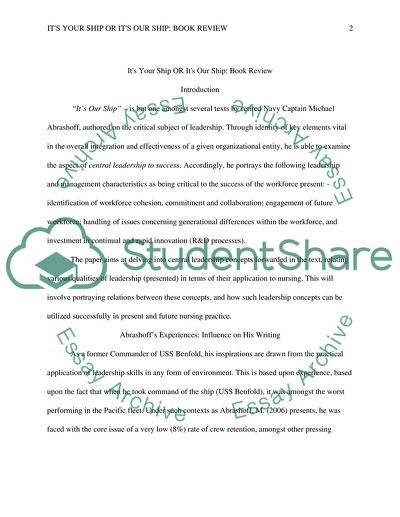Cite this document
(Analysis of It's Your Ship or It's Our Ship by Abrashoff Book Report/Review, n.d.)
Analysis of It's Your Ship or It's Our Ship by Abrashoff Book Report/Review. Retrieved from https://studentshare.org/nursing/1859931-its-your-ship-or-its-our-ship
Analysis of It's Your Ship or It's Our Ship by Abrashoff Book Report/Review. Retrieved from https://studentshare.org/nursing/1859931-its-your-ship-or-its-our-ship
(Analysis of It's Your Ship or It'S Our Ship by Abrashoff Book Report/Review)
Analysis of It's Your Ship or It'S Our Ship by Abrashoff Book Report/Review. https://studentshare.org/nursing/1859931-its-your-ship-or-its-our-ship.
Analysis of It's Your Ship or It'S Our Ship by Abrashoff Book Report/Review. https://studentshare.org/nursing/1859931-its-your-ship-or-its-our-ship.
“Analysis of It's Your Ship or It'S Our Ship by Abrashoff Book Report/Review”, n.d. https://studentshare.org/nursing/1859931-its-your-ship-or-its-our-ship.


